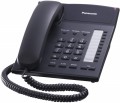Type
The type of phone primarily determines its purpose and features:
—
Stationary telephone. Also known as the landline phone.
It is the classic “home phone” which is most often installed in apartments for private use. This can be either a simple device with only purpose of making and receiving calls, or more complex device packed with features like display and an electronic notebook, a modern digital answering machine, a caller ID feature, etc.
—
System phone. More complex and multifunctional devices that can programme office mini-PBXs, organize conferences, switch incoming calls to internal network numbers, etc. Such devices are most often used in large offices.
Caller ID
Caller ID is a feature
of automatic identification of the caller's number. As soon as the phone receives an incoming call, this feature will immediately show the caller's number on the display, allowing the user to know who is calling even before he accepts the call. But at the same time, there is one nuance that many people omit: when you request a number from the PBX, the phone immediately establishes a connection, that is, from the same minute, the billing of the call begins for the subscriber at the other end of the wire.
Display
The presence of the
display improves the usability of the phone. On the one hand, it is much more convenient to dial the desired number on such a device, since all numbers are displayed on the screen, which reduces the possibility of error. Also using the phone book feature is more convenient if there is a screen. On the other hand, the automatic number identification feature simply cannot be implemented on a phone without a display.
Speakerphone
Hands-free mode allows you to have a conversation with the person on the other end of the wire, without picking up the phone for this and not looking up from other activities. For this, a speaker and a microphone built directly into the phone case are used.

